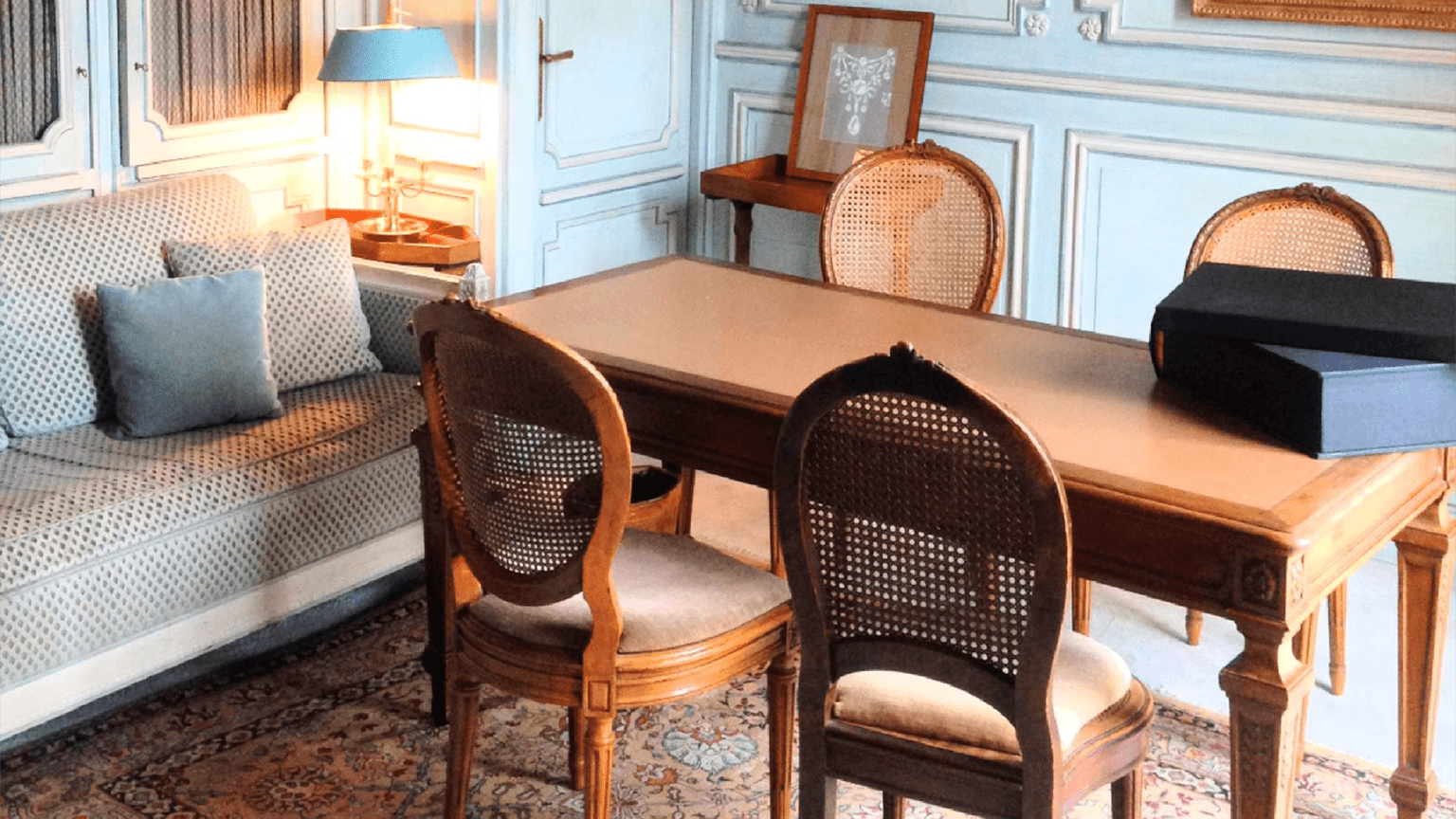By Marie Chabrol
Image Above: The blue private room. Photo : ©MarieChabrol
Place Vendôme, besides the famous column of the world and the Ritz, the most famous French and international jewelry houses offer to dazzled eyes walkers and enthusiasts their most beautiful diamonds, their most beautiful emeralds and their dazzling ornaments. But this place contains well-kept secrets. Among its unknown places to the general public, there is one more surprising than the others: the Bureau Bleu. It is in this boudoir, beautifully restored, that I take you to discover a small part of one of the most beautiful treasures of the place : the archives of the house Chaumet.
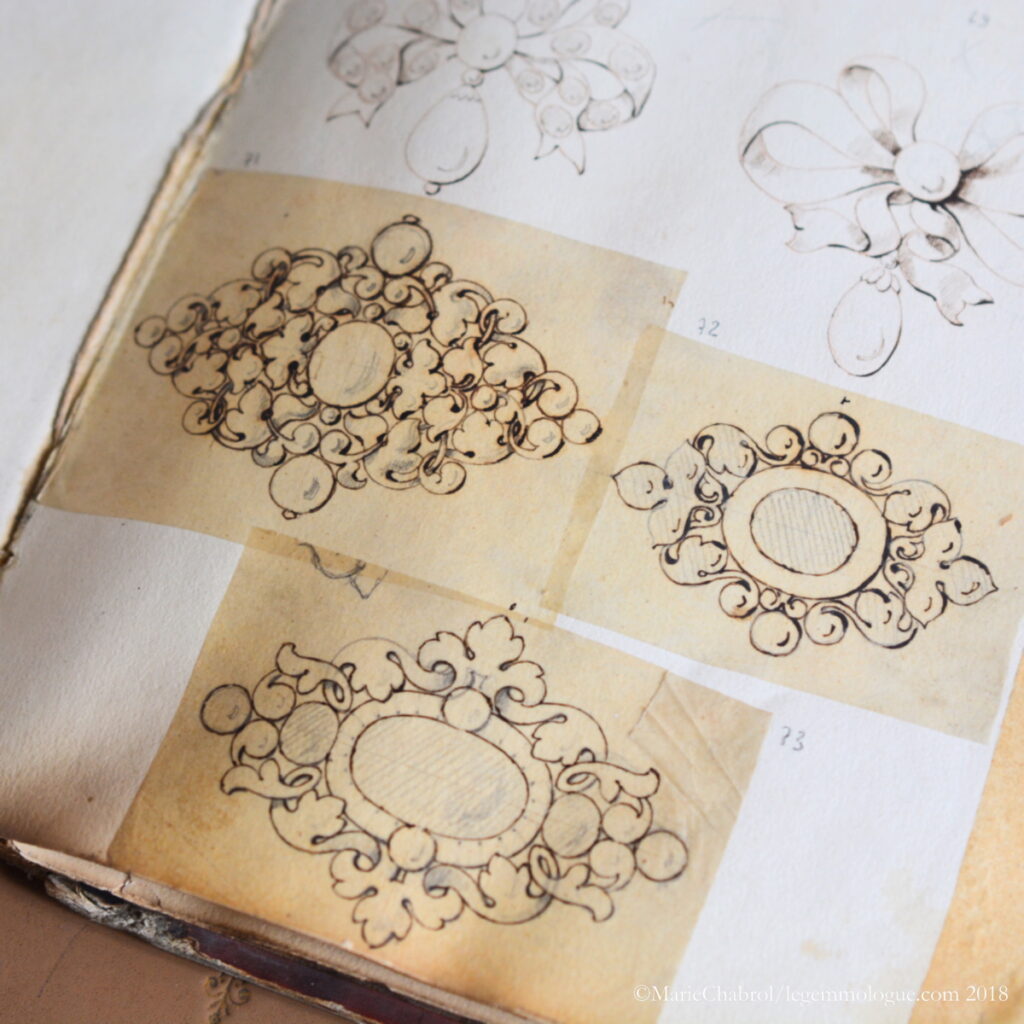
François-Régnault Nitot first installs the house at 15 Place Vendôme where he acquires in 1812 the mansion. We find there his apartment and his shop. Almost a century later, Joseph Chaumet moved the house to 12 of the same place. We are in 1907, the address is now final. This mansion dates, like the rest of the square, from the end of the 17th century. On the first floor is the Chaumet museum and its famous “tiara hall”. This apartment was the on to Claude Baudard de Vaudrier, lord of Saint James, treasurer general of the navy of King Louis XVI. In 1777, he commissioned architect François-Joseph Bélanger for the Grand Salon. Now restored and classified as an historic monument, this place is one of the most beautiful on the Vendôme square. The Bureau Bleu was to be a room. It was especially for many years the one of Beatrice de Plinval: hired in 1969, she was a designer, curator, creator of the internal museum of the house, she is also the “memory” of the house. His successor was recently appointed. Guillaume Robic – passed by the Ministry of Culture, the CMN or the Monnaie de Paris, took office in the house on January 1, 2018.
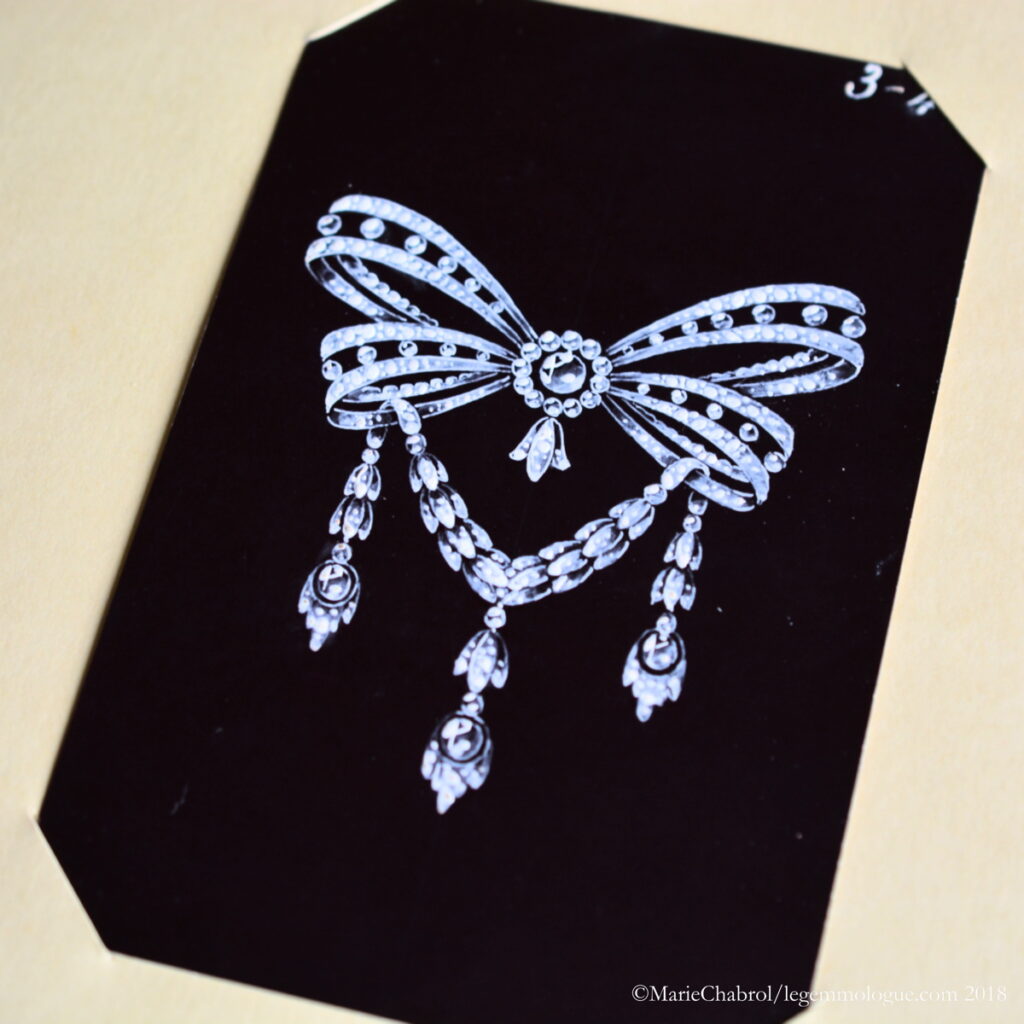
The Chaumet archives
Discovering the archives of the house is first of all immerse yourself in an absolutely amazing and particularly complete set. Very early, the in-house jewelers gather documents to keep a trilateral order. Albums are made, gathering drawings, sketches and gouaches. Which ones are numbered. Some albums are ordered around a theme like knots when others date from a particular time. Even today, the archivists of the house do not know who made these albums. There are no documents or “mission orders” in a way. It seems that this fund was first created in a completely empirical way. The oldest drawings dating from 1810. We are in full period F.-R. Nitot whose head of workshop is Jean-Baptiste Fossin. It is not about gouaches as elaborate as those we could see during the last exhibitions devoted to this medium. It is about, in this album, sketches often made in graphite pencil. There are only a few colors, but the work of the volume is quite remarkable.
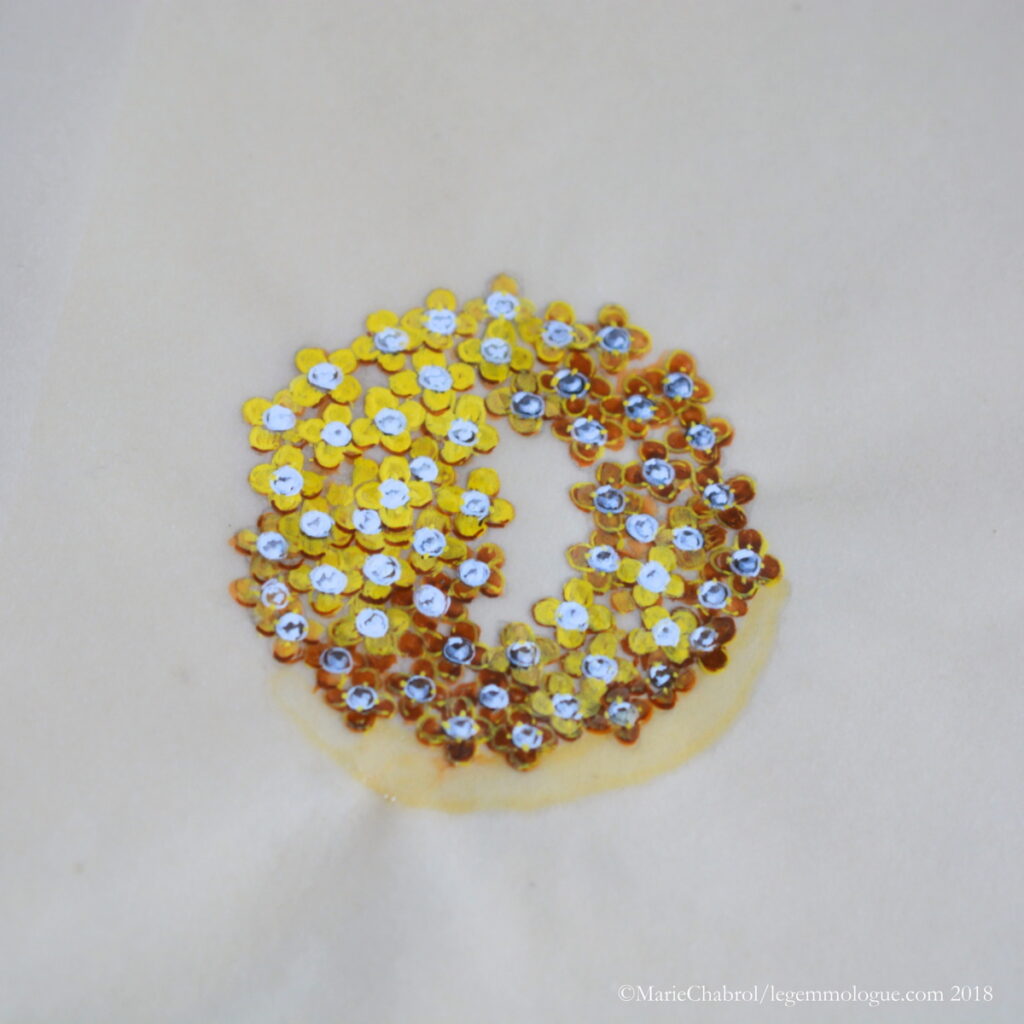
To understand the richness and the complexity of the fund, some numbers are needed. Also the archives of the house Chaumet are composed as follows:
- 80,000 drawings mainly in the famous albums
- 66,000 negatives of which 33,000 are actually glass plates.
- 300,000 photos on paper that represent jewels before delivery. A nuance however, this important figure incorporates duplicates. Indeed, some pieces could be the subject of 3, 5 or even 10 identical photo prints.
- Then add accounting documents: account books, deposit books and even about 500 plasters mainly made in the nineteenth century.
- Finally, and this is one of the richness of this fund, the house retains some 500 models in nickel silver (often enhanced with gouache) which represent a part of the achievements of the house. This is mainly about tiaras and brooches.
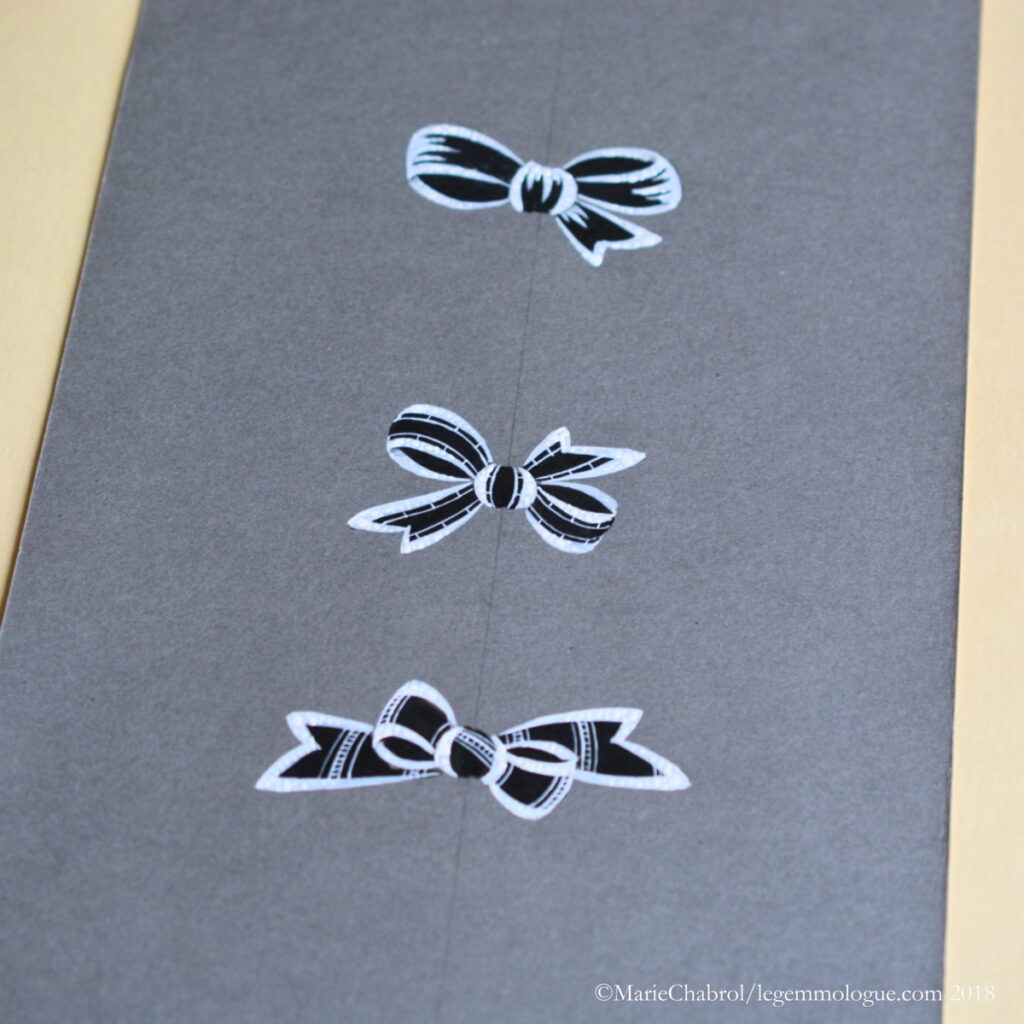
Among the important elements, it must be borne in mind that this fund is fairly homogeneous. Which is not always the case with archives. Wars and removals are all problems for conservation. Here, there is probably no talk of “white areas”. Archivists arriving to find the elements that researchers may need by consulting the various components of the fonds: drawings, photo plates, paper prints or accounting documents … etc.
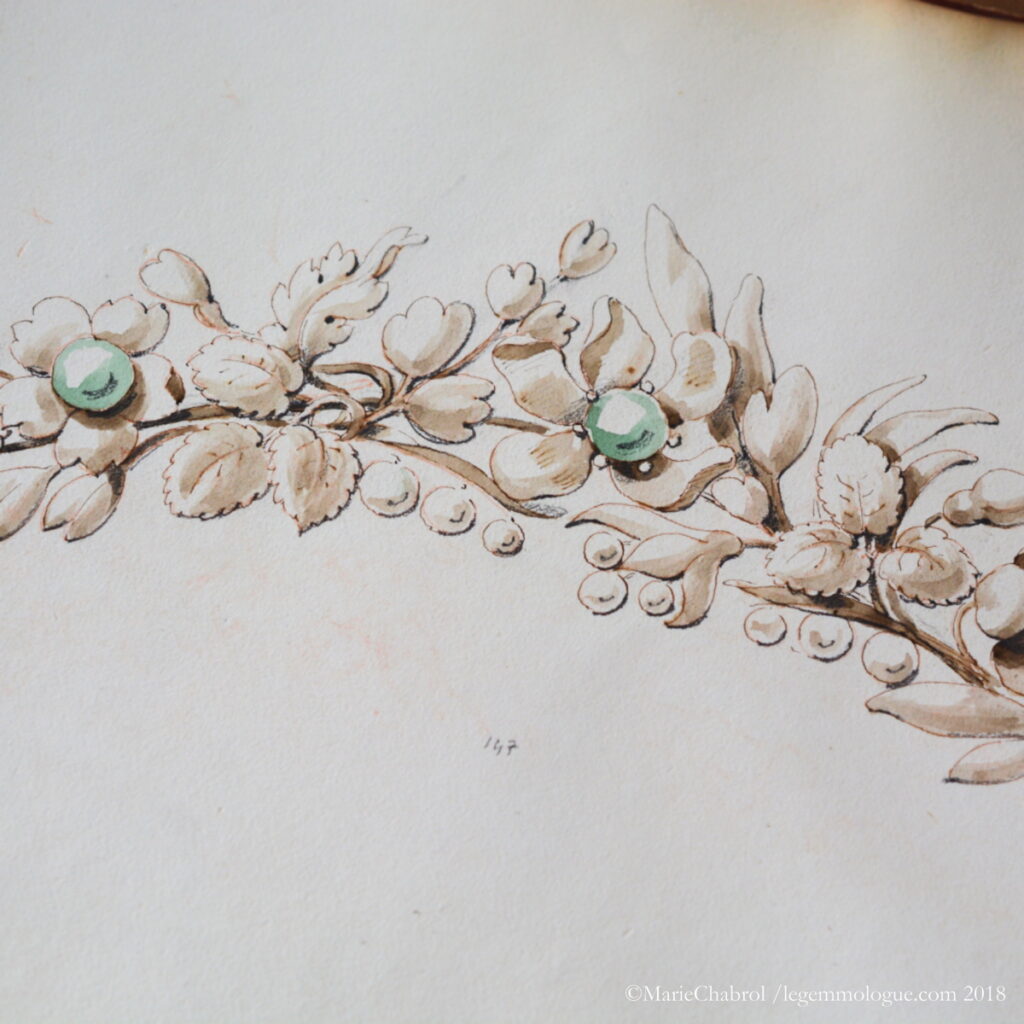
Chaumet’s researches and willingness to perpetuate as well as to exploit its archives also made it possible to understand their constitution. We know for example that from 1870 the house have in-house photographers. The photo studio was also spruced up in the square because of the light. Before moving several times. But the study of some photos reveal the reflection of the column …

The digitization, a token of protection
From 1990, the house programs annual campaigns of restoration and conservation of its archives. Old albums are entrusted to graphic arts conservators (INP) in order to stabilize them when they are too damaged. Neutral papers and boxes of protection are thus integrated in order to preserve this fund for a long time. Work is also underway creating optimum hygrometric conditions for the preservation and consultation of documents. The heritage department of the Chaumet house is gradually growing. One, then two people to count today 5 people full time.
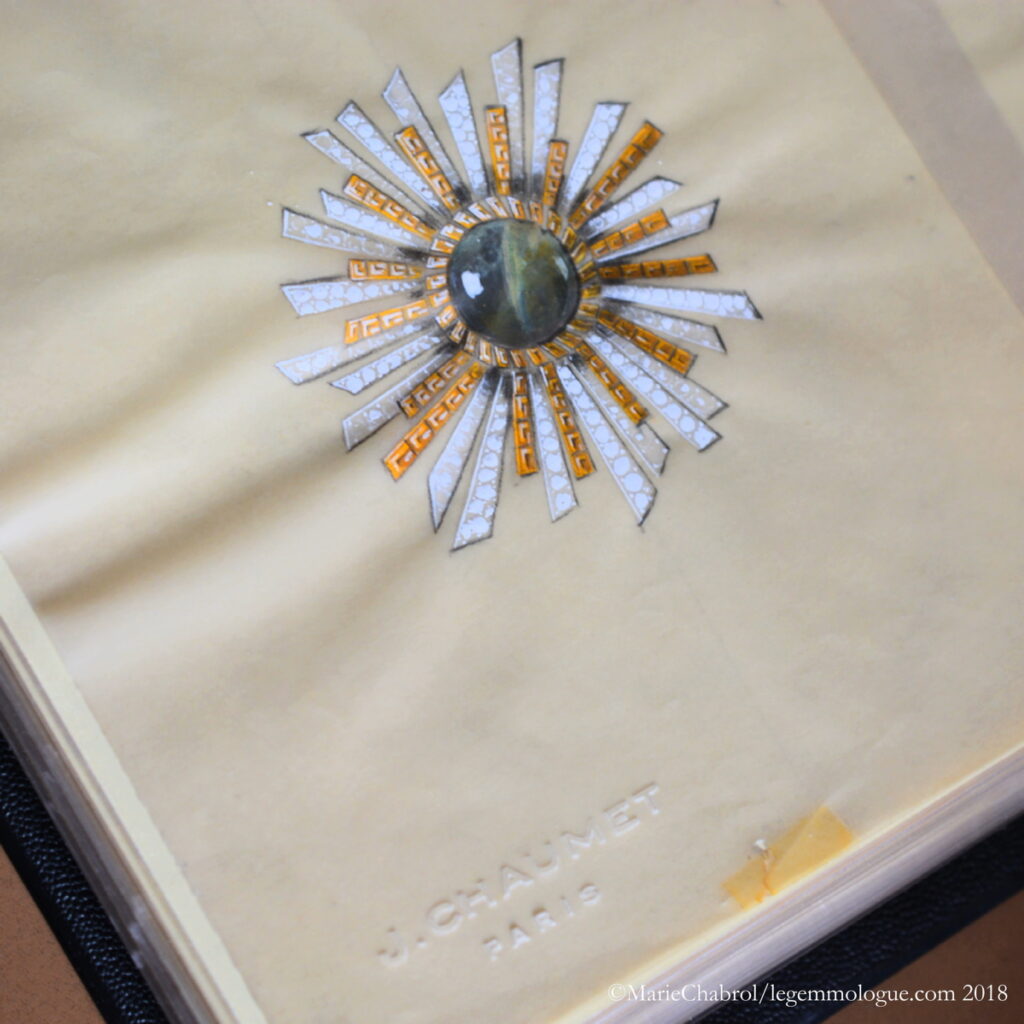
Photos are among the most complicated documents to keep. The papers dry and crackle, the prints pass and do not support the light of day. For example, the gouachés of the exhibition of La Piscine will have to find in the dark for 18 months after two months of exposure. A time necessary to “rest” and sustain them.
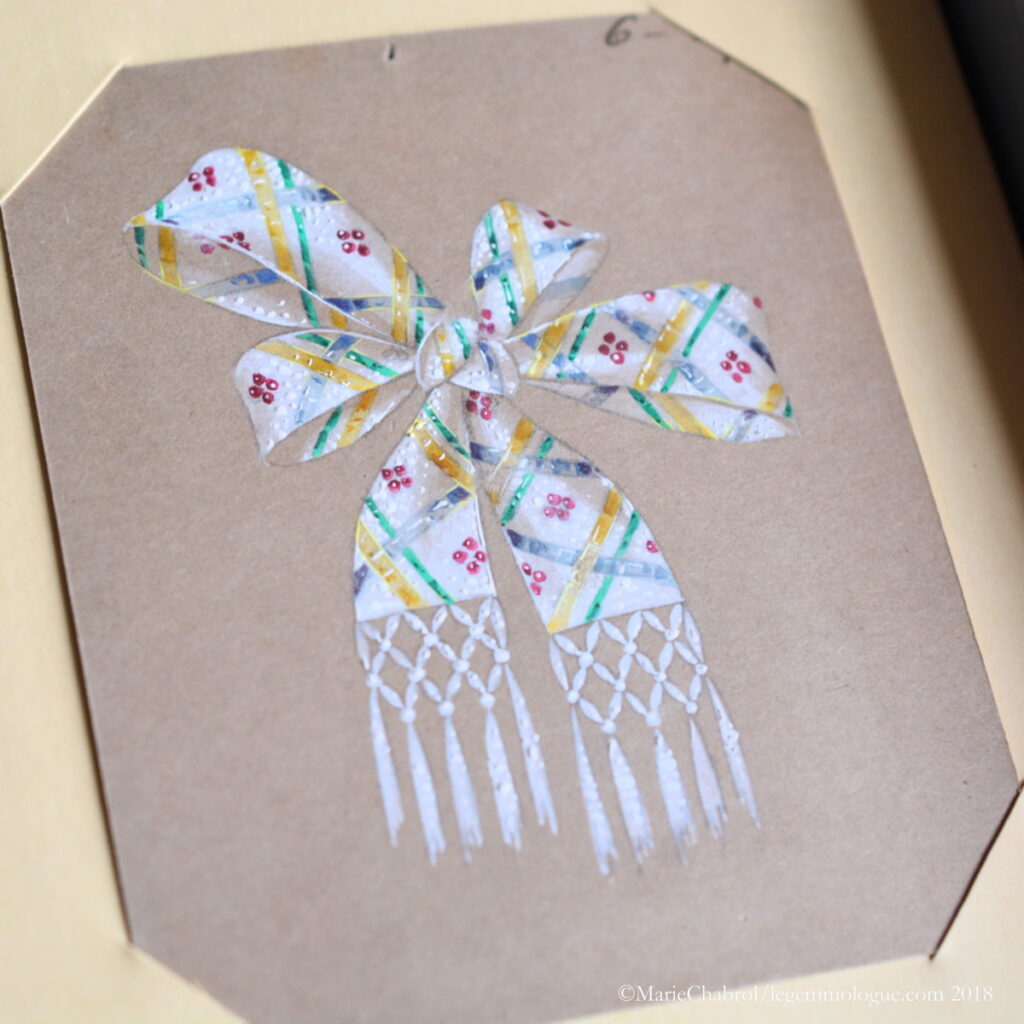
Since the 2000s, digitization has helped the work of archivists. Thus bill books between 1838 and 1958 are now available in digital format. Saving time for researches. Since last year, it is the photographic collection which is digitized progressively with the rhythm of recurring campaigns. Because it takes time, a photo sometimes requires up to 15 minutes of work to get a satisfactory result.
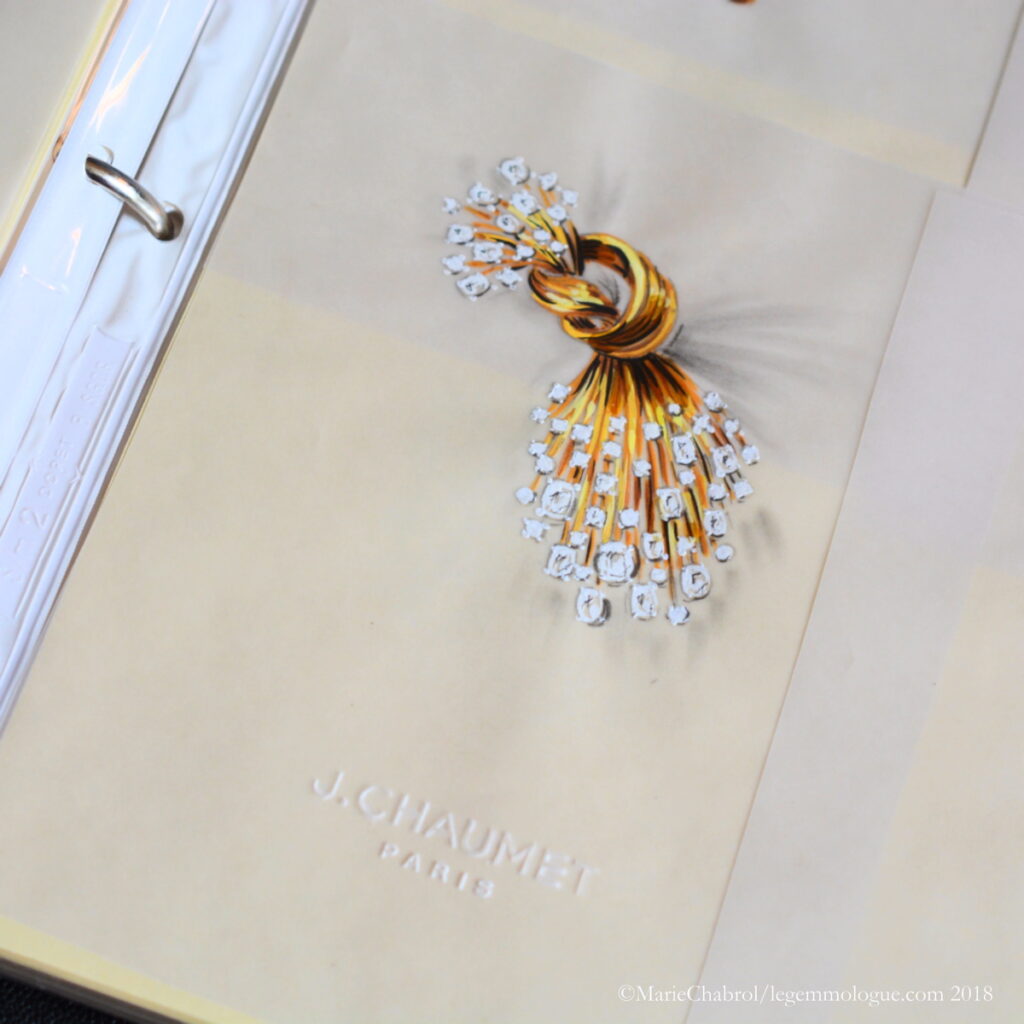
Be blown away
This visit and discovery of the archives will have been particularly inspiring. The album Fossin is remarkable for its content. But the thematic album on the knots is even more surprising. Hundreds of pages, sketches, gouaches testify to the talent of the designers of the house. And the bow, DNA of the house, has been treated more than sharp. At all times, in all styles and with all possible materials, it is reinvented perpetually. Exciting! Finally, I immersed happily in a 70s album where the yellow gold is perfectly treated. Work with thread and stones for timeless renderings. A real nice trip made possible by the team of the house who knew how to answer to my too many questions!
